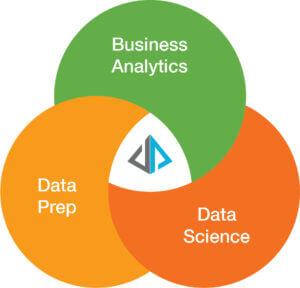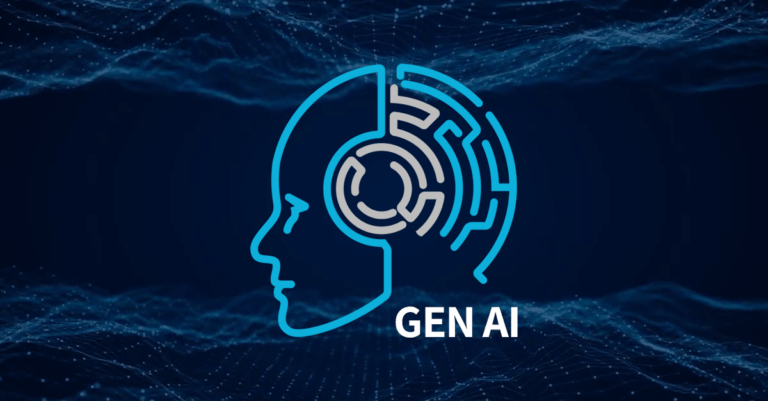Business Intelligence (BI) tools, such as modern data analytics, are critical for anticipating and navigating future crises and for driving competitive value. But in most organizations, business users—from executives to team leaders—remain highly dependent on technical teams for their data. They rely on a wide range of systems, integrations, workarounds, and “key persons” to access the data they need to inform critical decisions. This common scenario can introduce unnecessary confusion and is very time-consuming.
Decision intelligence is the answer. It is an evolving approach to data analytics that can help regular employees independently access the data they need, when they need it, to support business decisions of all kinds. Non-technical employees can share their data-driven insights and make them both understandable and consumable to colleagues.
“Engineered decision intelligence” featuring “networks of emergent decision making” is one of the top 10 trends in data analytics for 2021, according to Gartner. More than just analytics for occasional reporting, decision intelligence can support better outcomes the moment each decision is required.
This article explores how enterprise companies can forgo complex amalgamations of data tools in favor of a more holistic approach to business intelligence. I will also discuss the three connected data ecosystems of BI—data prep, data science, and business analytics—and how modern decision intelligence consolidates and enhances the benefits of each.
Defining Decision Intelligence
The underlying problem with traditional analytics is that it is inaccessible to the users responsible for making business decisions. The skills and knowledge needed to build, manipulate, and report the relevant data are often more aligned with tech and development personnel—not business leaders and strategists. Decision intelligence changes that by facilitating “a wide range of decision making” through advanced AI and “adapted system applications,” as Gartner describes.
In this way, decision intelligence becomes very practical on a case-by-case basis, freeing regular business users from leaning on technical teams and manual processes to get the insights they need. As Gartner described in a different 2020 report, decision intelligence “brings multiple traditional and advanced disciplines together [for] decision models and processes in the context of business outcomes and behavior.”
Why do organizations struggle to achieve Decision Intelligence today?
Enterprise organizations have spent the last few decades adopting various data products that serve individual purposes or teams. While powerful for their intended functions, these purpose-built solutions are typically designed and integrated in ways only data scientists and data stewards understand. This makes accessing consistent data difficult across departments and teams on the business side of the organization.
Specifically, modern data technologies tend to be fragmented into three separate ecosystems:
 Data prep: Vendors that perform data prep—such as ETL—by taking data from various sources and preparing it for analysis. These companies are exclusively focused on ETL-type and data-wrangling tasks.
Data prep: Vendors that perform data prep—such as ETL—by taking data from various sources and preparing it for analysis. These companies are exclusively focused on ETL-type and data-wrangling tasks.
Data science-focused applications: Data scientists use these tools to serve up assets to consumers directly. Best-in-class vendors enable users to do this via a self-service interface.
Business analytics: Traditional self-service analytics, which involves creating dashboards and reports, and data discovery.
Collectively, data prep, data science, and business analytics are the three pillars that support “decision intelligence.” But bringing the outputs of each together—and merging them in meaningful ways—requires support from technical users, involves costly integrations between multiple platforms, and carries onboarding and adoption challenges.
In these environments, the level of collaboration required to drive a single decision—let alone align multiple teams with the same, accurate, and timely data—is often too tedious to bear. Worst of all, business decision-makers end up relying on outdated data or anecdotal evidence, rather than establishing a true data-driven approach.
A picture of successful, modern Decision Intelligence
A holistic approach to decision intelligence consolidates all three ecosystems onto a single analytics platform. It automates key aspects of the decision-making process, leveraging contextual data to support successful decisions for business users—without reliance on technical personnel. With a holistic decision intelligence approach, this can be achieved at scale for all business users across the organization.
For example, advanced analytics tools that support decision intelligence can sit at the center of the three spheres in a Venn diagram configuration. With a single, sophisticated decision intelligence platform, organizations can:
- Augment decision-making experiences for business users with contextual insights, enabling them to create more compelling and relevant data stories that can boost their individual decisions or those of their teams.
- Support business leaders as they expand data literacy within their organizations, accelerating internal adoption of decision intelligence tools among business users.
- Identify new use cases and act upon those opportunities by extending capabilities to anyone in the organization, no matter their level of technical proficiency.
Are you ready to take the next step toward Data Intelligence?
In their 2020 piece, Gartner predicts that “by 2023, more than 33% of large organizations will have analysts practicing decision intelligence including decision modeling.” As companies begin to realize the new value of their business decisions (and the associated ROI of their core data solutions), this holistic decision intelligence approach to analytics adoption will only continue to grow.
The time for organizations of all sizes to reevaluate their existing analytics approach is now. Start with these questions: “How can I align my analytics with practical decisions?”; “How can I do this at scale?”; and “How can I ensure nontechnical users get the insights they need to feel confident and communicate what they learn from our data?”
Are you ready to take the first step? Sign up today for Pyramid Analytics’ One Day Analytics Challenge. Or, if you’d like to speak with a solutions consultant to review your current tech stack, schedule a demo today.





 Data prep: Vendors that perform
Data prep: Vendors that perform 







